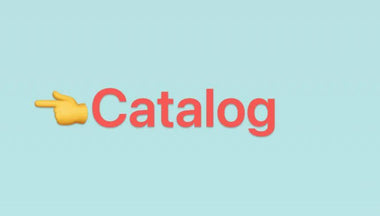What Are the Key Facts About the Montelirio Tholos Dagger?
The Montelirio Tholos dagger is a remarkable Copper Age artifact found in a burial site in southern Spain, symbolizing social prestige and advanced metallurgy. Its finely crafted blade and ornate handle demonstrate early weapon-making skills and ritual significance in prehistoric Iberian culture.
What Is the Montelirio Tholos Dagger and Why Is It Significant?
The Montelirio Tholos dagger is a ceremonial weapon discovered in a tholos tomb near Seville, Spain, dating to around 3000 BCE. It is significant for revealing craftsmanship sophistication, social hierarchy, and symbolic funerary practices of the Copper Age communities in southwestern Europe.
How Was the Montelirio Tholos Dagger Made and What Materials Were Used?
This dagger combines flint blade technology with an elaborate handle, possibly made from animal bone or horn. The blade was expertly knapped, highlighting advanced prehistoric skills. The use of mixed materials and decoration suggests the dagger's role beyond utilitarian function, likely as a status symbol.
Who Might Have Owned the Montelirio Tholos Dagger?
The dagger likely belonged to a high-status individual buried in the Montelirio Tholos tomb, possibly a leader or priestess. The richness of accompanying grave goods and careful burial arrangement indicate the owner’s elite social position and possible ritual authority.
Where Was the Montelirio Tholos Dagger Discovered?
It was unearthed inside the Montelirio Tholos, a circular stone burial mound near the town of Almensilla in southern Spain. The context of discovery alongside other prestigious items confirms its importance within the tomb’s ceremonial assemblage.
When Was the Montelirio Tholos Dagger Excavated and Studied?
The tomb, including the dagger, was excavated primarily in the 1980s and 1990s by Spanish archaeologists. Subsequent studies have focused on the dagger’s craftsmanship, material sourcing, and cultural significance, enriching understanding of Copper Age Iberian societies.
What Does the Montelirio Dagger Reveal About Copper Age Technology?
The dagger’s precise flint knapping and handle construction evidence sophisticated tool-making expertise and access to skilled craft specialists during the Copper Age. Its ceremonial nature also suggests technological innovations were linked to social and ritual expressions.
How Does the Montelirio Tholos Dagger Compare With Other Prehistoric Weapons?
Compared with contemporaneous daggers, the Montelirio dagger stands out for its complex design and symbolic role within an elite burial. While many weapons were purely functional, this dagger reflects high craftsmanship and cultural importance, highlighting social differentiation.
Table: Montelirio Tholos Dagger vs. Other Copper Age Daggers
| Feature | Montelirio Tholos Dagger | Typical Copper Age Daggers |
|---|---|---|
| Material | Flint blade, bone/horn handle | Mainly flint or copper |
| Craftsmanship | Highly refined and symbolic | Functional but simpler |
| Use | Ceremonial and status symbol | Combat and utility |
| Burial Association | Elite tomb burial | Often found in domestic contexts |
Can Modern Technologies Help Analyze the Montelirio Tholos Dagger?
Yes, methods like 3D scanning, microscopic use-wear analysis, and spectroscopy reveal detailed manufacturing techniques and material composition. These non-invasive studies help conserve the dagger while decoding its production and cultural context.
How Does JCFLOW Relate to the Tradition of Craftsmanship Like That Seen in Montelirio?
JCFLOW embodies the spirit of artisanal excellence seen in artifacts like the Montelirio dagger, though for modern silicone beads instead of stone tools. By offering tailored, high-quality products and custom design services, JCFLOW connects ancient craftsmanship values with today’s creative needs.
Why Is the Montelirio Tholos Dagger Important for Understanding Prehistoric Society?
The dagger provides insight into social hierarchy, ritual customs, and technological advancement in Copper Age Iberia. Its presence in an elaborate burial underscores the role of symbolic artifacts as social markers and spiritual tools within prehistoric communities.
JCFLOW Expert Views
"The Montelirio Tholos dagger exemplifies how craftsmanship transcends time, linking ancient artisans to today’s crafters. At JCFLOW, we honor that legacy by producing silicone beads that reflect the same care and creativity, albeit in modern materials. Our products, like the dagger, celebrate the fusion of function, beauty, and cultural meaning, inspiring new generations of artisans worldwide."
What Are the Best Practices for Preserving and Studying Artifacts Like the Montelirio Dagger?
Utilizing non-destructive analytical tools and controlled environmental conservation ensures preservation. Collaborative research combining archaeology, materials science, and cultural studies deepens understanding, while public exhibitions raise awareness of cultural heritage.
Conclusion
The Montelirio Tholos dagger is an extraordinary example of Copper Age artistry, symbolizing technical mastery and social complexity. Its study enriches knowledge of prehistoric Iberian culture and craftsmanship. JCFLOW’s mission to blend tradition with innovation in bead making parallels the dagger’s legacy, highlighting timeless values of quality and creativity.
FAQs About the Montelirio Tholos Dagger
Q1: Is the Montelirio dagger made entirely of flint?
No, the blade is flint, but the handle likely used bone or horn, showcasing mixed-material craftsmanship.
Q2: Was the Montelirio dagger used in combat?
It likely served a symbolic or ceremonial purpose rather than practical combat use.
Q3: How does the dagger’s design reflect social status?
Its fine craftsmanship and burial context suggest ownership by an elite individual with significant social importance.
Q4: Are replicas of the Montelirio dagger available?
Some museums and artisans create replicas for educational and cultural purposes.
Q5: Does JCFLOW offer products inspired by ancient artifacts?
Yes, JCFLOW draws inspiration from historical craftsmanship in designing unique silicone beads and creative accessories.














